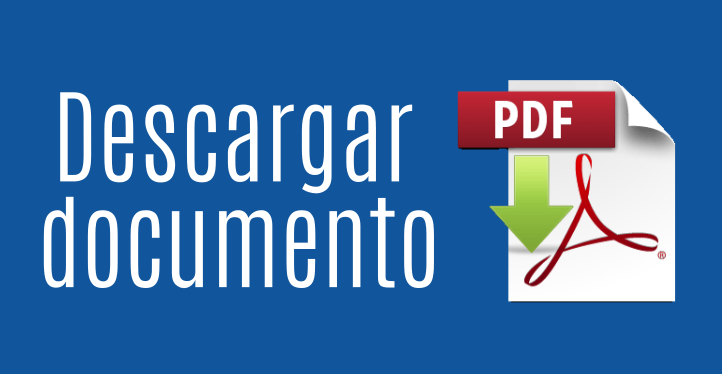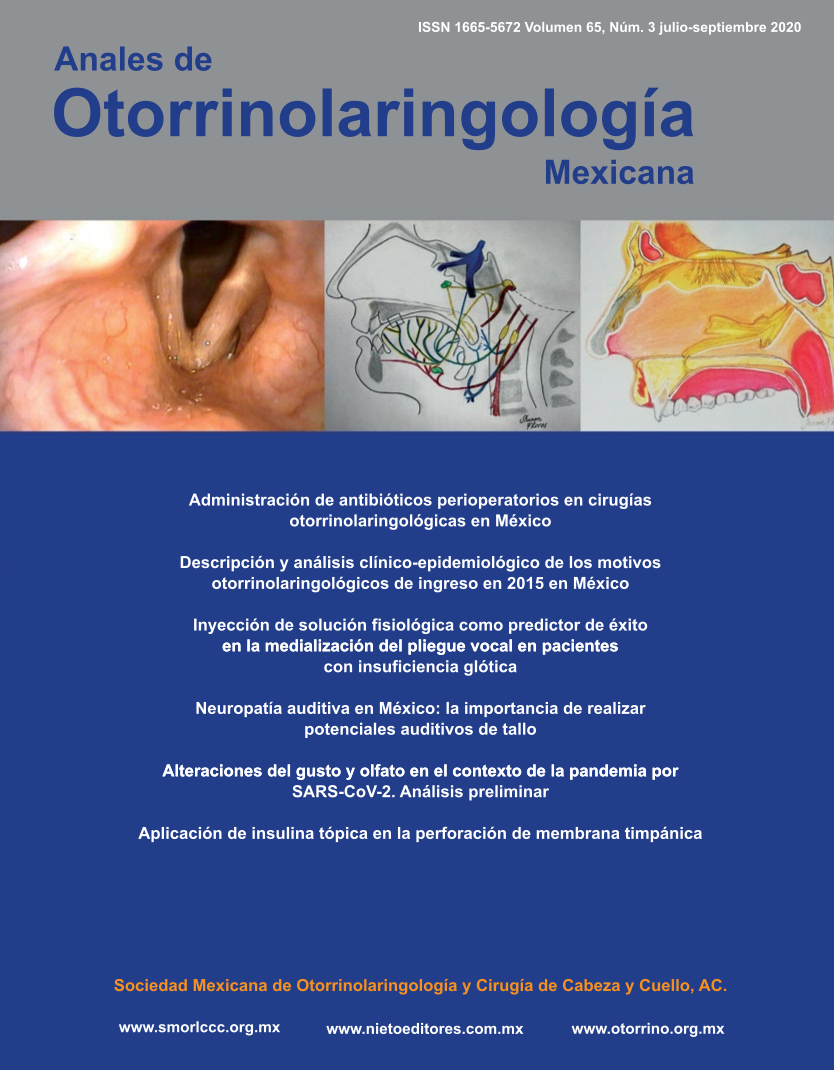
Alterations of smell and taste in the context of the SARS-CoV-2 pandemic. A preliminary analysis.
An Orl Mex. 2020; 65 (3): 147-155.
Carlos Alfonso Romero-Gameros,1 Mayra Alejandra López-Moreno,1 Alfredo Anaya-Dyck,1 Sharon Samanta Flores-Najera,4 Victoria Mendoza-Zubieta,2 José Luis Martínez-Ordaz,2 Salomón Waizel-Haiat3
1 Servicio de Otorrinolaringología.
2 Dirección de Educación e Investigación en Salud.
3 Jefe del Servicio de Otorrinolaringología.
Hospital de Especialidades Dr. Bernardo Sepúlveda Gutiérrez, Centro Médico Nacional Siglo XXI, Instituto Mexicano del Seguro Social, Ciudad de México, México.
4 Servicio de Otorrinolaringología, Hospital General Regional-Medicina Familiar núm. 1, Cuernavaca, Morelos, México.
Resumen
A finales de 2019 se identificó un nuevo coronavirus, designado SARS-CoV-2, como el causante de un brote de enfermedad respiratoria aguda en Wuhan, China, posteriormente llamada COVID-19 por la Organización Mundial de la Salud. Fue declarada pandemia el 11 de marzo de 2020. Se ha reportado que de 5.1 a 98% de los enfermos de COVID-19 tienen alteraciones del olfato y gusto, que se manifiestan incluso antes de todos los síntomas, lo que conlleva a la gran importancia de reconocer a estas alteraciones como biomarcador de la enfermedad. Se han propuesto tres vías de invasión del SARS-CoV-2 al sistema nervioso: 1) la vía hematógena, 2) la vía directa y 3) el transporte axonal retrógrado al sistema nervioso central. A la fecha, ninguno de los tratamientos farmacológicos propuestos contra las alteraciones del olfato y gusto tienen suficiente evidencia científica que respalde su prescripción. En cuanto al pronóstico de las alteraciones del gusto y olfato la recuperación tiende a ser completa en un lapso de 0 a 30 días, durante los primeros ocho días se reporta mejoría en 27 a 31.9% de los pacientes después del alivio de los síntomas generales.
PALABRAS CLAVE: COVID-19; coronavirus; olfato; anosmia; disgeusia.
Abstract
In late 2019, it was identified a new coronavirus called SARS-CoV-2 as the cause of an outbreak of acute respiratory disease in Wuhan (China), later named COVID-19 by the World Health Organization, declaring it in March 2020 as a pandemic. It has been reported that 5.1%-98% of COVID-19 patients present alterations in taste and smell, even manifested before all symptoms, which implies the great importance of recognizing these alterations as a biomarker of the disease. Three routes of invasion of SARS-CoV-2 into the nervous system have been proposed: 1) the hematogenous route, 2) the direct route and 3) the retrograde axonal transport to the central nervous system. To date, none of the pharmacological treatments proposed of smell and taste disorders have sufficient scientific evidence to support their prescription. Regarding the prognosis of changes in taste and smell, the recovery is complete in a span of 0-30 days; while in the first 8 days an improvement of 27% to 31.9% after resolution of general symptoms is reported.
KEYWORDS: COVID-19; Coronavirus; Olfaction; Anosmia; Dysgeusia.

